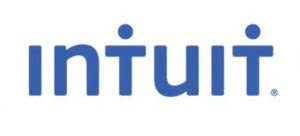
Adam received his master’s in economics from The New School for Social Research and his Ph.D. from the University of Wisconsin-Madison in sociology. He is a CFA charterholder as well as holding FINRA Series 7, 55 & 63 licenses. He currently researches and teaches economic sociology and the social studies of finance at the Hebrew University in Jerusalem. Someone on our team will connect you with a financial professional in our network holding the correct designation and expertise. Our team of reviewers are established professionals with decades of experience in areas of personal finance and hold many advanced degrees and certifications. Finance Strategists has an advertising relationship with some of the companies included on this website.
Over 1.8 million professionals use CFI to learn accounting, financial analysis, modeling and more. Start with a free account to explore 20+ always-free courses and hundreds of finance templates and cheat sheets. Our first guinea pig will be Microsoft (MSFT), and we will use the latest 10-k to calculate the numbers. I will screenshot the company’s balance sheet and highlight the inputs for our ratio. The debt-to-asset ratio measures that debt level and assesses how impactful that might be for any company. Even with a debt to asset ratio below one, the figure still needs to be put into perspective.
How to Calculate the Debt-to-Asset Ratio
All you’ll need is a current balance sheet that displays your asset and liability totals. The debt-to-asset ratio can be useful for larger businesses that are looking for potential investors or are considering applying for a loan. For example, in the example above, Hertz reported $2.9 billion in intangible assets, $1.3 billion in PPE, and $1.04 billion in goodwill debt to asset ratio as part of its total $20.9 billion of assets. Therefore, the company had more debt ($18.2 billion) on its books than all of its $15.7 billion current assets (assets that can be quickly converted to cash). A total debt-to-total asset ratio greater than one means that if the company were to cease operating, not all debtors would receive payment on their holdings.
Eni increases share buyback, pledges to cut leverage in 2024 – Reuters
Eni increases share buyback, pledges to cut leverage in 2024.
Posted: Wed, 24 Apr 2024 15:45:00 GMT [source]
A ratio greater than 1 shows that a considerable amount of a company’s assets are funded by debt, which means the company has more liabilities than assets. A high ratio indicates that a company may be at risk of default on its loans if interest rates suddenly rise. A ratio below 1 means that a greater portion of a company’s assets is funded by equity. Yes, Total Debt to Asset Ratio (also known as Debt to Equity Ratio) can be used to compare companies and gain insight into the leverage or risk of each business. This ratio offers a picture of how a company is managing its finances — how much debt it is using to finance its assets in comparison to how much is supplied by shareholders or owners.
Create a Free Account and Ask Any Financial Question
We may earn a commission when you click on a link or make a purchase through the links on our site. All of our content is based on objective analysis, and the opinions are our own. Total assets may include both current and non-current assets, or certain assets only depending on the discretion of the analyst. The lower debt-to-asset ratio also signifies a better credit rating because, as with personal credit, the less debt you carry, the more it helps your credit rating. Unfortunately, the financial standing of Lucky Charms seems to be progressively getting worse. To begin the process, Christopher gathers the Lucky Charm’s balance sheet for November 2020 to ensure that he has all the information he needs at his disposal.

As with all financial metrics, a “good ratio” is dependent upon many factors, including the nature of the industry, the company’s lifecycle stage, and management preference (among others). Typically, the lower the ratio, the better, but as we saw with our analysis of the above companies, each industry carries different debt loads. It is important to compare your company to others in the same industry. Across the board, companies use more debt financing than ever, mainly because the interest rates remain so low that raising debt is a cheap way to finance different projects. Any company’s assets are part of the growth driver, but they also help guarantee and service any debt a company carries. A firm that lends money will want to compare its ratios of one business against others to come to an accurate analysis.
How do you improve your debt-to-asset ratio?
This ratio provides a picture of a company’s overall financial health by showing how much of the company’s assets are financed by debt. A higher debt to asset ratio means that the company has less capital available to finance its operations, which can be unappealing to potential investors. As with all other ratios, the trend of the total debt-to-total assets ratio should be evaluated over time. This will help assess whether the company’s financial risk profile is improving or deteriorating.
- The valuation modeling course by WSO will further enhance your ability to understand and map ratios and use them to plot trend lines and gain insights into different ratios.
- Both ratios, however, encompass all of a business’s assets, including tangible assets such as equipment and inventory and intangible assets such as copyrights and owned brands.
- This financial comparison, however, is a global measurement that is designed to measure the company as a whole.
- If the firm raises money through debt financing, the investors who hold the stock of the firm maintain their control without increasing their investment.
- A debt to asset ratio of above 40% can not only hurt the business’s creditworthiness but also its ability to access funds for investments.
- Capital leases listed on the balance sheet are in short-term and long-term debt.
Gather this information before beginning work on figuring out your debt to asset ratio. Once you have these figures calculating through the rest of the equation is a breeze. If debt to assets equals 1, it means the company has the same amount of liabilities as it has assets.
Part 2: Your Current Nest Egg
The formula for calculating Total Debt to Asset Ratio is Total Liabilities divided by Total Assets. It is expressed as a percentage, with a higher percentage indicating more reliance on debt and a lower percentage indicating more reliance on equity. Get instant access to lessons taught by experienced private equity pros and bulge bracket investment bankers including financial statement modeling, DCF, M&A, LBO, Comps and Excel Modeling. One shortcoming of this financial measure is that it does not provide any information about the quality of assets. Instead, it lumps tangible and intangible assets and presents them as a single entity.
- Let’s look at a few companies from unrelated industries to understand how the ratio works to put this into practice.
- The Liability section lists all the company’s liabilities and long-term debt and totals for both assets and liabilities are indicated.
- For instance, if his industry had an average DTA of 1.25, you would think Ted is doing a great job.
- Unless you suddenly make windfall profits that rapidly increase your assets, you will need to repay debt to improve your debt-to-asset ratio.
- This presents many positive aspects for the business, such as being perceived as less risky by lenders.
- These improvements occurred during a period of substantial increases in grain prices, higher ending inventory values, and farm incomes.
Instead of considering total debt, which is a sum of short-term and long-term debt, this formula will only consider long-term debt. As mentioned above, this formula has different variations that only include certain assets and liabilities. One example is the current ratio, which is a fraction of current assets over current liabilities.

Recent Comments